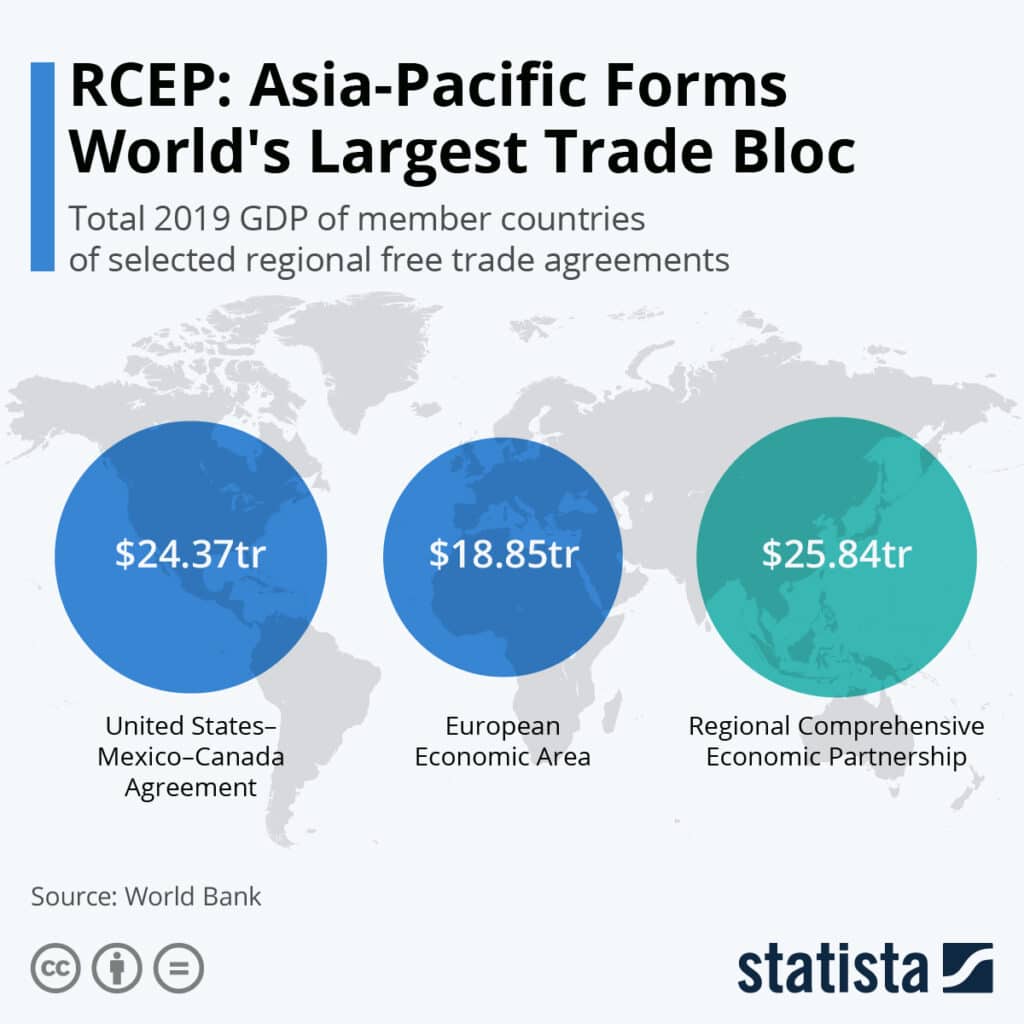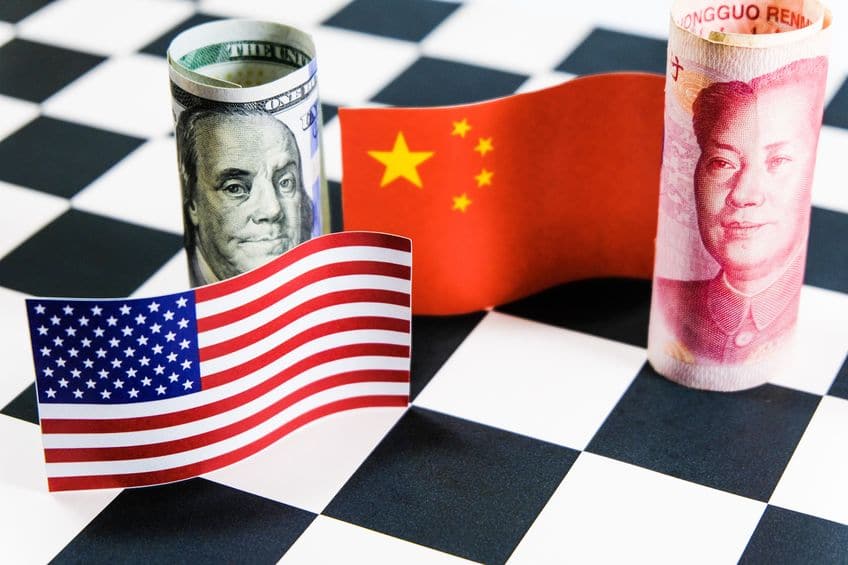One of key things we discussed this past Monday at our investment briefing was the historic Asian trade deal that was signed this past weekend, because of the long-term economic and investment implications. Since most of the headlines Monday morning were about the great success of the Moderna vaccine, the details of this new trade pact were easy to miss. Here’s the deal: Following some eight years of negotiations, 15 Asian countries joined together to form the Regional Comprehensive Economic Partnership (RCEP).
RCEP is now the world’s largest trade alliance made of 10 ASEAN states (Brunei, Cambodia, Indonesia, Laos, Malaysia, Myanmar, the Philippines, Singapore, Thailand, and Vietnam) plus China, South Korea, Japan, Australia and New Zealand. About 33% of the world’s population lives in the RCEP countries, with China alone accounting for 1.4 billion of the roughly 2.2 billion people included.
This is a huge new trade alliance and potential game changer, further complicating things for the U.S. Essentially, China is taking the lead in securing its role in world trade. The U.S. is being left out while two of its most important trading partners and allies are included: Japan and South Korea.
As the chart below shows, the RCEP trade bloc accounts for almost a third of global GDP (as of 2019), totaling some $25.8 trillion. This makes the newly formed Asian trade alliance bigger than the United States-Mexico-Canada Agreement (USMCA, successor to NAFTA) and the European Economic Area, which comprises the 27 countries of the European Union plus Norway, Iceland, Liechtenstein and during the Brexit transition phase, the United Kingdom.
As we have noted previously (see paper Rethinking the 60-40 Portfolio), the world is on its way to dividing into three major trading blocks, with possibly disparate outcomes for each: US/Canada/Mexico, Europe, China/Asia. Countries will likely have to take sides at some point, and China’s first mover advantage on this hurts the United States. This is especially important as Japan, South Korea and Australia become significantly more tied economically to China than to the U.S.




